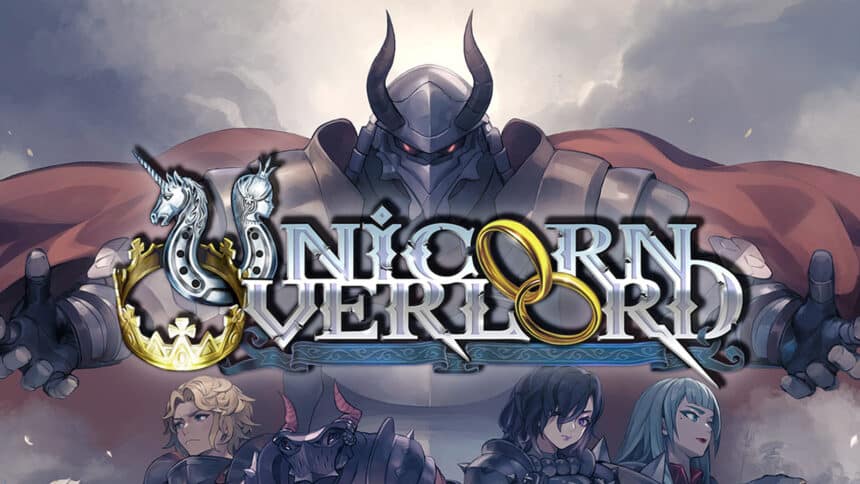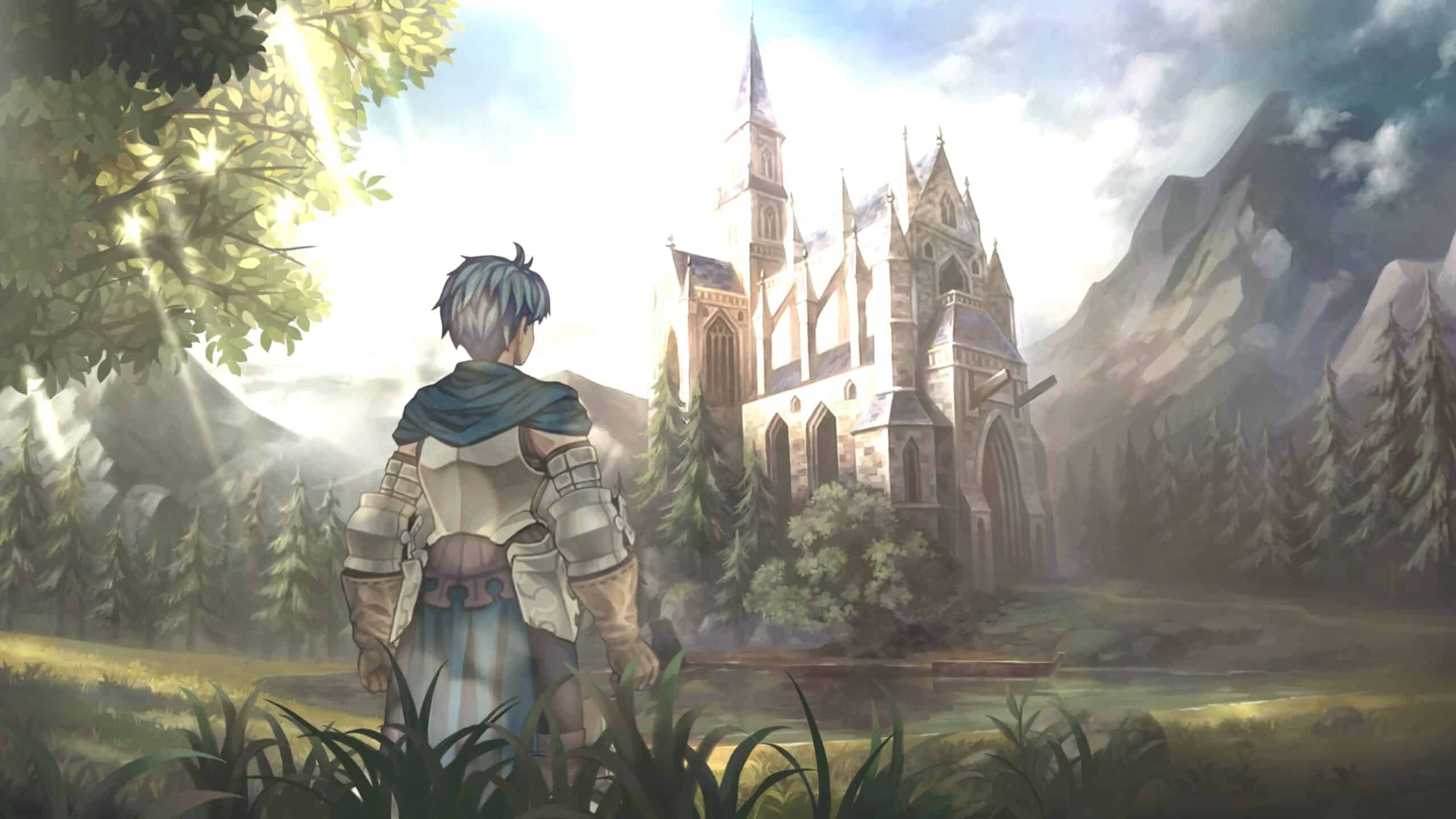Only a few RPGs effectively use characters to slowly dole out lore; this Unicorn Overlord review is about one such game. Unicorn Overlord does away with lengthy cutscenes that take control away from the players to explain what’s happening. It also does away with usual genre tropes like long (and sometimes dull) info dumps and lengthy cutscenes. Instead, it focuses on the friendly and not-so-friendly characters to paint a clearer picture.
My Overlord?

Developer Vanillaware has delivered a unique strategic RPG focusing on character development and stories. The closest game I’ve played of this nature is Ogre Battle, released over two decades ago, so Unicorn Overlord was a pleasant surprise. I admit I wasn’t aware of Vanillaware and its previous catalog before Unicorn Overlord, but I’m keen on exploring it now.

Vanillaware doesn’t shy away from naming the inspirations behind Unicorn Overlord. The developers name-dropped Fire Emblem and Ogre Battle, and the influence is evident as it blends mechanics from both, and adds some fresh ideas on top of it. I assembled a team and went on to fight battles in this intricately designed world of high fantasy and royal affairs. The game has a surprising amount of depth in both strategy and NPCs.

The game takes place in Fevrith and features Prince Alain as the lead protagonist. The story is very generic—I’m sure we’ve heard it before: A prince takes on the oppressive villain to win back his throne and liberate his people. However, the characters, side stories, and exposition were expertly handled and no two stories are alike. Unicorn Overlord kept me engaged throughout the 40 hours I played.
A Beautiful World

Unicorn Overlord is downright gorgeous. It has fantastic, almost 2.5D visuals, so much so that I was compelled to take around 100 screenshots. The backgrounds are visually striking, and I want to use them as my desktop. The paper-craft-designed characters stand out, too, with elaborate and instantly recognizable designs. Cut-scenes follow the same style and maintained this high quality illustration style throughout the game.

The overworld in Unicorn Overlord uses a different style, with the camera placed way above the action. This visual change is also welcome; it resembles real-life tabletop games and provides a clear view of the battlefield. The open world, including forests, snow-capped mountains, deserts, and valleys, is rendered in this board game style.

Unicorn Overlord not only delivers visuals but also has outstanding sound design. Characters wearing armor have that echo-in-a-bucket sound to their dialogue. Big indoor spaces like churches add a different kind of echo to the voices. I found the voice acting great, too. For the most part, the voices match the characters really well. The music is also fantasy-appropriate, with each area and time of day changing the music.
Pre-determined Tactics

The combat in Unicorn Overlord is automated. Yes, the team I had used moves on its own. I was taken aback at first because an auto-battler is rare these days, but the game quickly won me over. There is a boatload of battles to win, and a typical turn-based gameplay would soon wear me out. The auto-battle is a quality-of-life change that was odd at first, but by the end, I was glad the developers chose this route.

It may sound like I didn’t have to do anything, but after all, the battle played itself. However, a ton of strategies are involved in setting up a team in Unicorn Overlord. The major draw is setting the attack patterns and strategically placing units in the best place. I got dropped on the overworld, the board like open world where I was free to explore and fight in any direction I fancied. Unicorn Overlord also allows attacking the main bad guy within an hour, although chances of victory are slim.

I needed to be wise before the battles in Unicorn Overlord. Combat is all about micromanaging the team, organization, unit placements, and tactical decisions before the battles. I directed the units in real-time. Encountering an enemy took me to another screen, where I got to organize the units and assess weaknesses in the enemy team. The game started with two fighters in the unit but eventually increased to six by the end.
Ready for Battle!

The battles are the main gameplay loop here. There are five kingdoms in the land of Fevrith, and it’s up to the players to liberate them from a brutal occupation. The battles can be small and straightforward or elaborate multi-round affairs that take a while to complete. After the opening, which acts as a tutorial, I was left to do anything I wanted.

I’d recommend not judging the combat in the initial hours; it’s meant to explain the mechanics and ease players in. The game significantly opens up after the starting hours, and the battles are fast and sometimes straining. The Tactics system in Unicorn Overlord reminded me somewhat of Final Fantasy XII and its Gambit System.

A usual “stage” starts at the command post in the overworld. To win, I had to clear/defeat a boss at the other end of the level and capture their command post. Spending Valor Points let me summon units; I then guided them through the map. Valor Points can regenerate after winning battles or clearing enemy outposts. The points can also be used to activate special abilities called Valor Skills. I also had to keep a close eye on character stamina; every unit has a set amount, and if depleted, the unit can no longer move or defend.
Units, Friends, and Characters

Characters in Unicorn Overlord have classes. The Thief class can dodge attacks, and Gryphon Knights let me fly around the map. Completing side quests netted me more units/friends. I highly recommend exploring and doing side quests in the game; they are as good as the main campaign. Units also have their own designs and backstories, and exploring those can flesh out the lore even further.

The NPCs and characters have great designs but are ultimately forgettable. Apart from a couple of my team’s mainstays, I found it hard to remember a unit, and it’s a good thing. There are so many characters that remembering them all would be hard, especially for someone old like me. Units can be upgraded, which gave me more characters in the unit. Honor is another currency that is used to upgrade units; it’s earned by completing various missions.
Fare Thee Well

Unicorn Overlord is a fantastic strategic RPG that delivers an engaging gameplay loop. Apart from the generic main story, the enthralling side quests and engrossing character backstories kept me playing for a long time. Developer Vanillaware’s art style is the standout here. It’s a beautiful-looking game with some nice characters and voice acting throughout. The auto battles might initially put some gamers off (like me), but the core gameplay is solid, keeping me entertained for around 40 hours.











